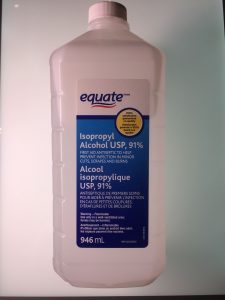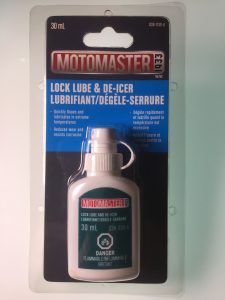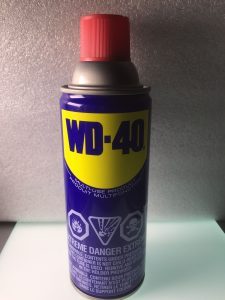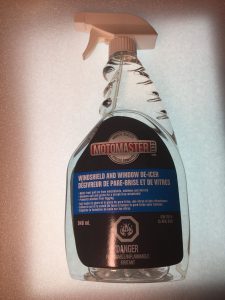How to Open a Frozen Car Door Lock | Mr. Locksmith Blog
For further information go to
For further information go to Mr. Locksmith Automotive
Winter and the cold weather is here. Lots of Emergency Calls to open car locks that have been frozen. The most common cause is washing your car and then parking it overnight or later in the day and you cannot open your car because the locks and sometimes the entire is frozen.
Hi I am Terry Whin-Yates from Mr. Locksmith. Melting ice from a frozen car lock can be achieved in several ways, but despite what your first instinct may be, using hot water is not one of the recommended methods. What to do when your car door lock is stuckDo Not Use Boiling Water to Unfreeze the Car.
- Do Not Use Hot Water
- Use Lock de-icer
- Lubricate Your Car Locks before they freeze.
- Never try to force your door open.
- Don’t Force the Key.
- Use a lighter to warm the key.
- Make your own Lock De-Icer
So what do you do if your car door lock is frozen “do not pour hot water over your car door and car lock.” Boiling water may or may not work but the hot water may damage the door lock and seals. Also, the water will freeze again this time in the lock and linkage. Don’t Use Hot Water. Car locks have tight seals and water can hardly reach inside to melt the ice, so the hot water rarely works. Moreover, depending on how fast you move or how cold it is outside, the hot water could freeze as well and further complicate the problem of how to melt ice from a car lock.
Use Lock de-icer is simply a specific concentration of isopropyl alochol. It’s the same chemical compound found in rubbing alcohol, for example, but at a much stronger concentration. According to its MSDS sheet, MotoMaster’s Lock De-icer, for example, is at least 98 percent isopropyl alcohol, while rubbing alcohol is typically between 50 and 70 percent strength.
The best solution to open a frozen lock is to use a commercial lock de-icer. If you don’t have any de-icers or are having an exceptionally bad day and your de-icer is trapped in the locked car, don’t worry. There are other options.
Use a De-Icer. A commercial de-icer may be used to melt the ice, and help you start your vehicle. During the cold season, you should keep de-icers in your car and home, and in winter jackets, so that you have these on hand at all times.
I have found the best method to loosen up the frozen lock is using a spray “Lock De-icer.” Lock De-icer is available at most Automotive Stores and Canadian Tire.
No Lock De-icer? If you are at home Hook up a blow dryer. If you don’t have a long enough extension cord try warming your key with a lighter (not too hot or you can melt some parts of the lock, a lot of plastic parts in modern car locks). Just heat the key up and put it into the lock, remove the key and reheat, keep doing this until the lock will eventually unfreeze and open. Note: If you do not have a lighter use you hands to warm the key.
Lubricate Your Car Locks: During cold weather flush your car locks with WD40 to remove the moisture (do not use oil, this attracts dust and dirt and will eventually jam the lock). Again, the best solution is “Lock De-Icer” sprayed into the car lock key hole. Gently put the tip of your car key into the lock to push back the key lock dust cover and spray lock de-icer into the keyway.
Never try to force your door open. Cold plastic and metal become brittle and cold metal will break with very little force. We have had to open cars with a broken car door handle because the customer try to force open the door.
Don’t Force the Key. Forcing the key into the lock is another bad option. It can result in a broken key or a broken lock.
A very simple method is to try opening the passenger door or the cars hatch is to apply lots of Windshield De-icer or make your own with 2/3 Rubbing Alcohol 91 percent isopropyl alochol and 1/3 water.
Hopefully these simple methods can help you. If you do call us at Mr. Locksmith Professional Locksmiths to open your car we use a portable rechargeable hair dryer and Lock De-icer to open your frozen car door lock.
Hi, I’m Terry Whin-Yates. This video is on how to unfreeze your frozen car lock. However, the best bet is prevention. Before your door, your car is frozen up get some WD-40. WD-40 is not a lubricant, it displaces water. So it’s a penetrating oil and a water displacement. When your locks are still working good, just spray the heck out of it. That gets all the water out of there and then you’re ready for winter. You shouldn’t have any problems. Do this a couple times throughout the season.
The major cause of locks being frozen and the car door being frozen is people wash their car.
The best way to unfreeze a frozen car lock is the lock de-icers. You can buy this for anywhere from $3-$5,. The good stuff is 90%+ isopropyl alcohol.
However, for $3-$5, get the good rubbing alcohol. This is 91% . So it’s a few dollars more but it’s 91 percent isopropyl. The lock de-icer works so well because it freezes at -100 to -120. That’s why it works. Our lock is frozen, the key is not going in all the way. Sometimes you gotta get that little dust cap out of the way. Just take the isopropyl, just take the lock de-icer, spray it in there. Slowly work your key in and get the lock turning. You just stick it right in, gets the dust cap out of the way, give it a squeeze. Be careful it’s highly highly flammable.
So you have no lock de-icer, you have no WD-40. What do you do? If you can, just be careful, but heat up the key, not to get red hot, just a little bit hot with a lighter or matches and then slowly just start inserting it into the lock ’til you get it. Also, you can heat the key in your hand and just heat it up bit by bit. Heat it up and then put it in a little bit. It could take two, three, five, ten times. Sooner or later, key is gonna go in and it will turn. So if you have absolutely nothing, you can use your hand and heat it up.
So the whole door is frozen. The easiest quickest way is you get some windshield lock de-icer or this is windshield and window de-icer. You can, actually, I’ll tell you how to make your own. Basically it’s isopropyl alcohol, rubbing alcohol. Just spray the whole side. Spray the lock, spray the sides of the door. And then you can get the door open. You can make your own lock de-icer as well as your windshield de-icer. For your lock de-icer just use this rubbing alcohol. This is great just for raw lock de-icer.
If you want to make some windshield de-icer, it works fantastic. Use 2/3 of this, of the high quality rubbing alcohol with 1/3 water. So 2/3 of this, 1/3 water. This works great. You put this on, you do it before you go to bed. But in the morning you just spray it on real quick. And this just de-ices the windshield in two seconds. It’s absolutely fantastic. No more scraping, no more rubbing. Just spray and the ice just goes away. So I hope this has been of help to unfreeze your frozen car locks.
Do Not Use Boiling Water to Unfreeze the Car.
Hopefully these simple methods can help you. If you do call us at Mr. Locksmith Professional Locksmiths to open your car we use a portable rechargeable hair dryer and Lock De-icer to open your frozen car door lock.
I hope you enjoyed watching this video. Subscribe to my channel. Also, visit my website and you can see what online locksmith training I have for beginners, intermediate, and advanced, as well as my covert methods of entry, and my non-destructive methods of entry.
For On-line and Hands-on Locksmith Training Dates and Cities near you for Beginners, Intermediate, Advanced Locksmithing as well as my Covert Methods of Entry, Non-destructive Methods of Entry and to purchase the Famous “Dumb Key Force Tool” that opens Smart Key locks in seconds go to Mr. Locksmith Training
For Locksmith Franchise and Licensing Opportunities go to http://mrlocksmith.com/locksmithfranchise-opportunities/.




